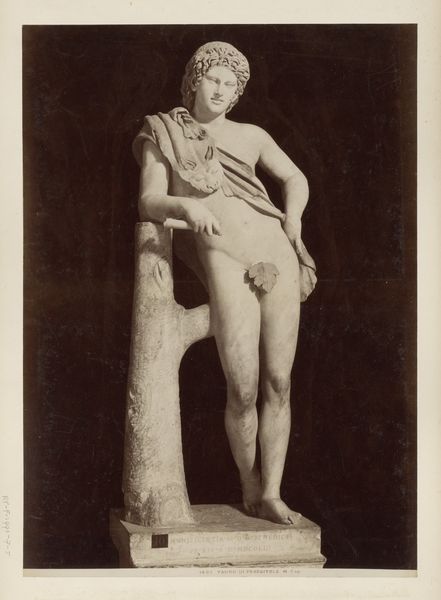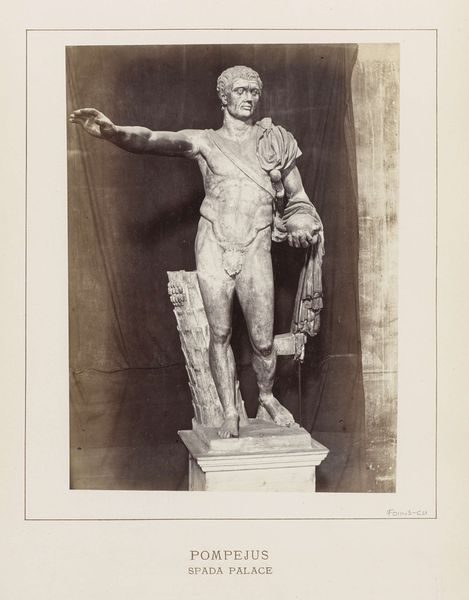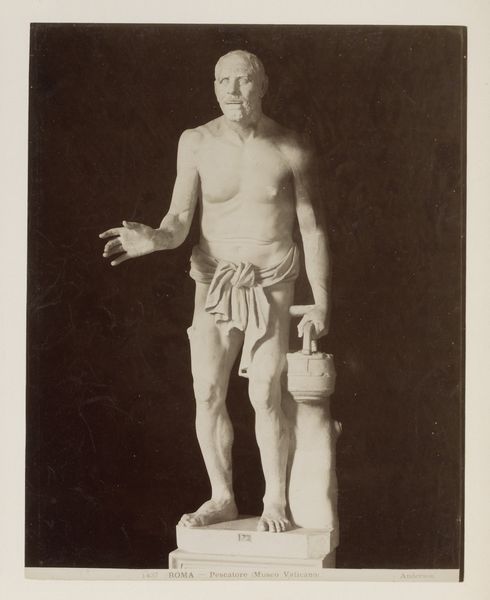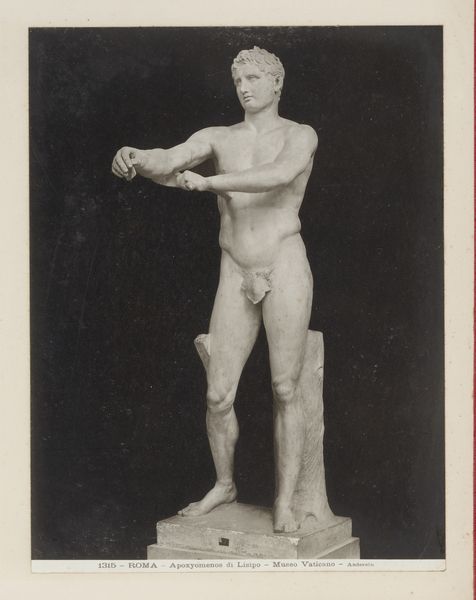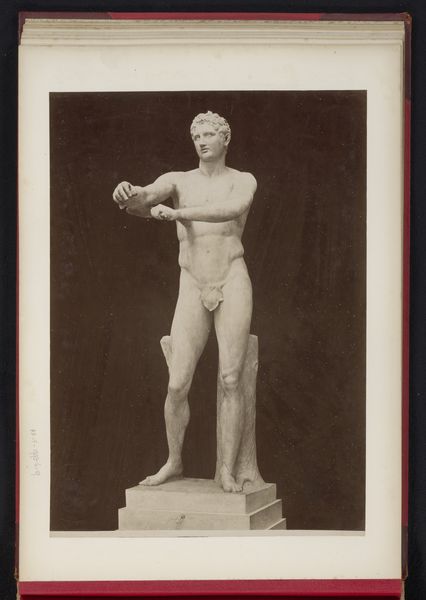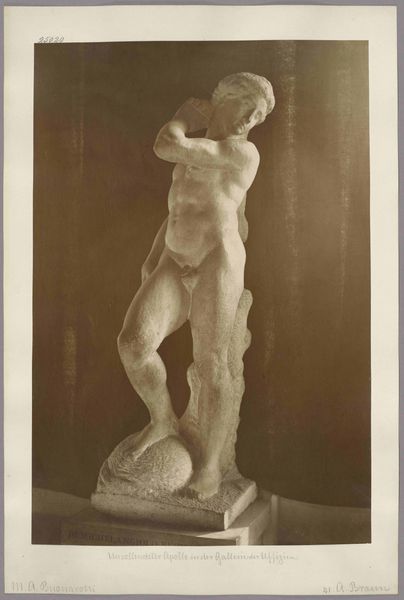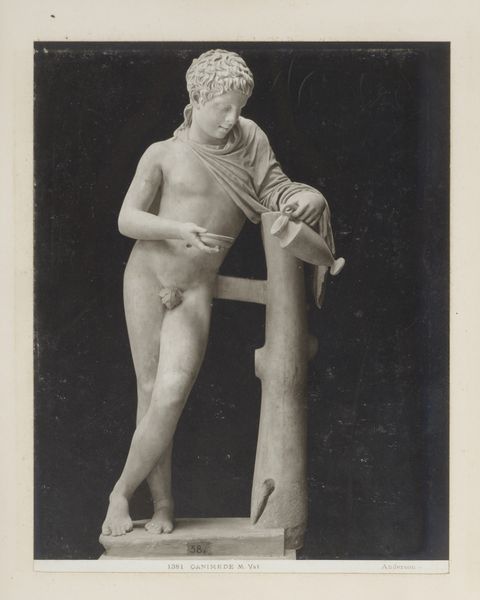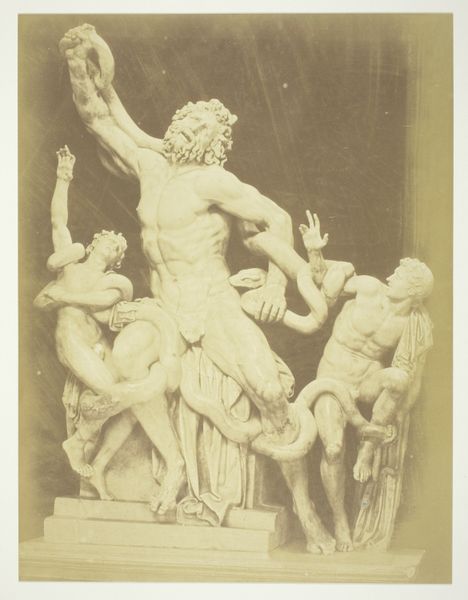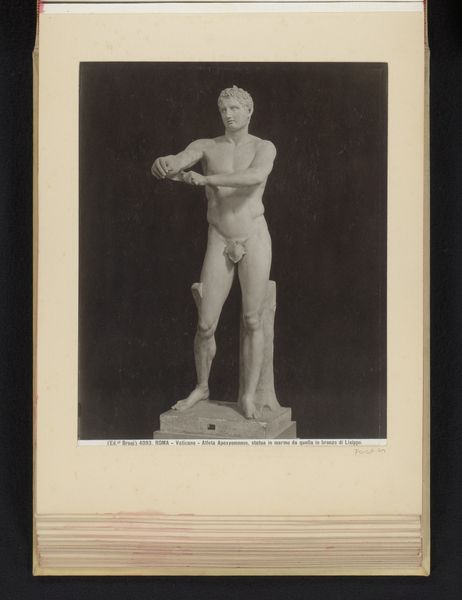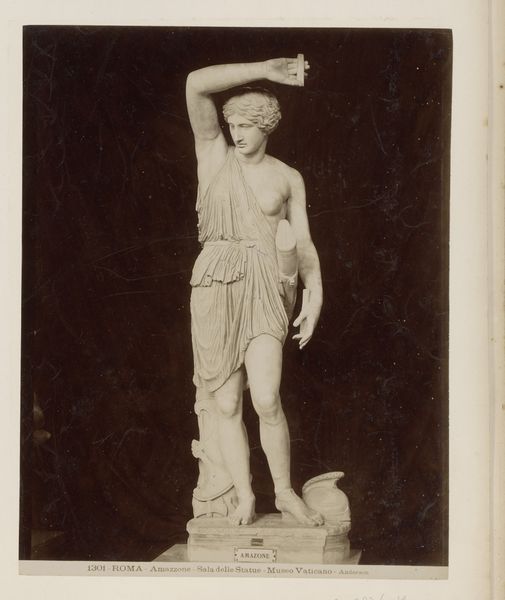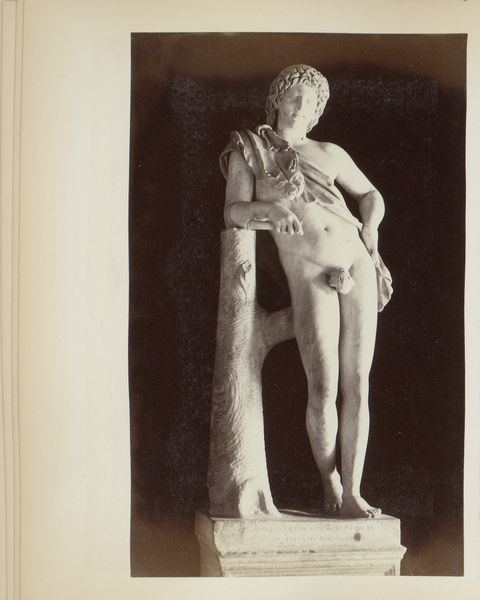
Sculptuur van Marsyas in de Capitolijnse Musea te Rome c. 1857 - 1875
0:00
0:00
photography, sculpture, gelatin-silver-print
#
portrait
#
greek-and-roman-art
#
photography
#
sculpture
#
gelatin-silver-print
#
nude
#
statue
Dimensions: height 257 mm, width 200 mm
Copyright: Rijks Museum: Open Domain
Curator: What a stark image. The first thing that hits me is the brutal vulnerability of the figure. His arms are bound, pulled high, emphasizing his physical suffering. It’s visceral. Editor: Indeed. The photograph we are looking at, a gelatin silver print from between 1857 and 1875, captures a sculpture of Marsyas housed in the Capitoline Museums in Rome. The photograph is credited to James Anderson and currently held in the collection of the Rijksmuseum. It depicts not just the sculpture of Marsyas, but its display, surrounded by other sculptural portraits. Curator: The display context itself adds layers. He's surrounded by stoic faces, all these busts observing him in agony. It amplifies his isolation, makes it even more unsettling. Do you think the choice to photograph it like this, surrounded by other busts, changes how we are meant to receive it? Editor: Certainly. Context is crucial. By showcasing the sculpture amidst a collection of portraits, the photographer subtly invites us to consider the politics of display. Are we meant to contemplate Marsyas as an historical figure or as a political symbol? It highlights the museum's role in shaping our perception and interpretation. In the Greek myth, of course, Marsyas challenged Apollo to a musical contest, and upon losing, suffered a horrific punishment. This photograph, taken long after that punishment, reframes that memory, setting it in conversation with political forces, as you mentioned. The torture isn’t merely mythological here. Curator: And consider the iconographic weight of flaying – being skinned alive – especially when considered in its wider implications in martyr imagery and religious narratives. It touches upon themes of sacrifice, artistic hubris, and the price of challenging established authority. Even the chains become meaningful, as we are confronted with the long, oppressive shadow of enslavement. Editor: I agree. Anderson’s photograph serves as a reminder that even the most classical and seemingly distant images are embedded within social and political dialogues, and museums themselves actively participate in those discussions. By staging this photograph, it begs the question: what statement is the institution trying to make? Curator: Absolutely. It pushes us to reflect not just on the myth of Marsyas, but on the ways in which we, as viewers and members of society, are implicated in structures of power and suffering that reverberate through time. It’s more than just documentation; it’s a charged confrontation. Editor: It is. The photograph moves the artwork from antiquity into a contemporary context. An intriguing look at history through a carefully constructed lens.
Comments
No comments
Be the first to comment and join the conversation on the ultimate creative platform.

